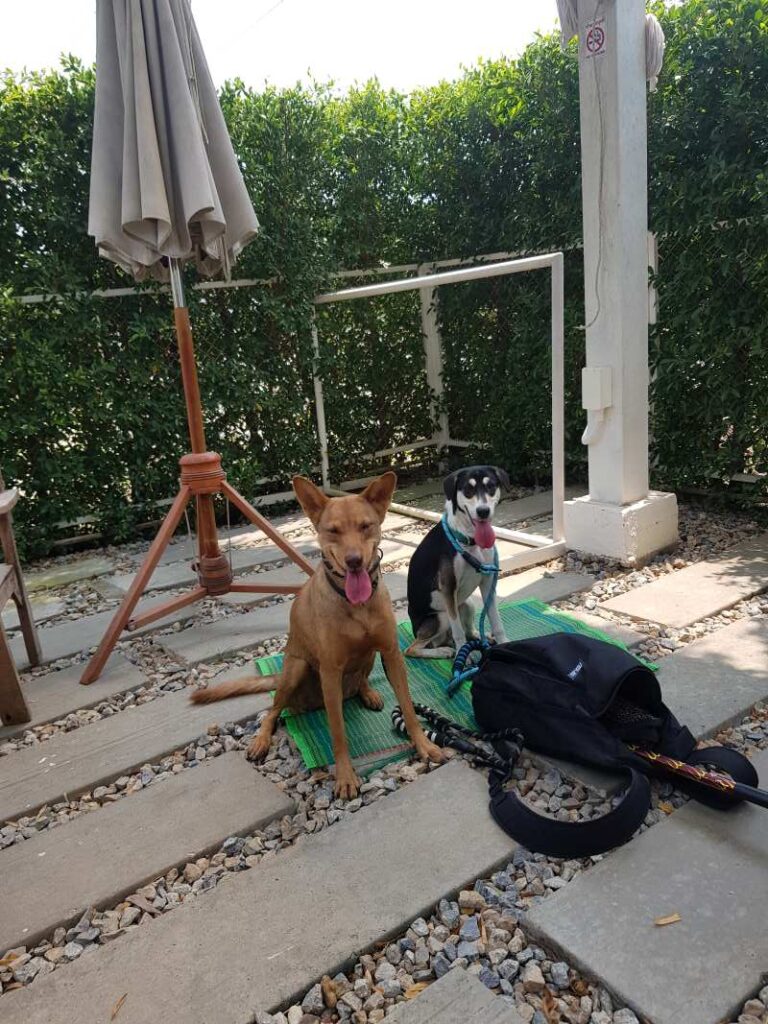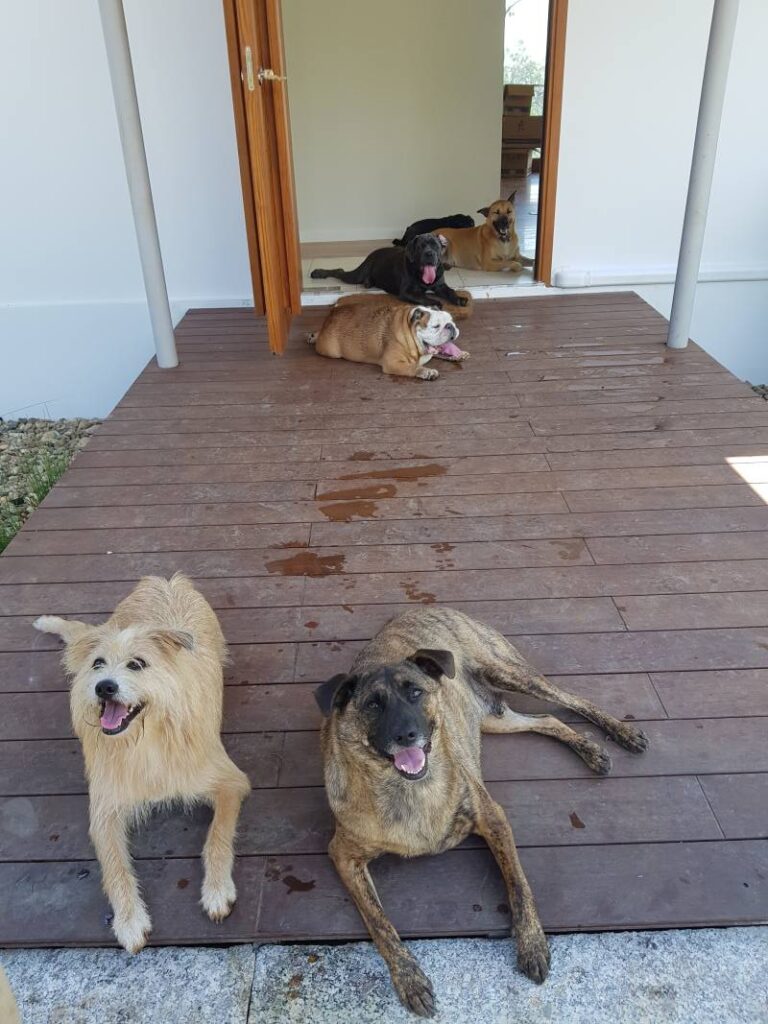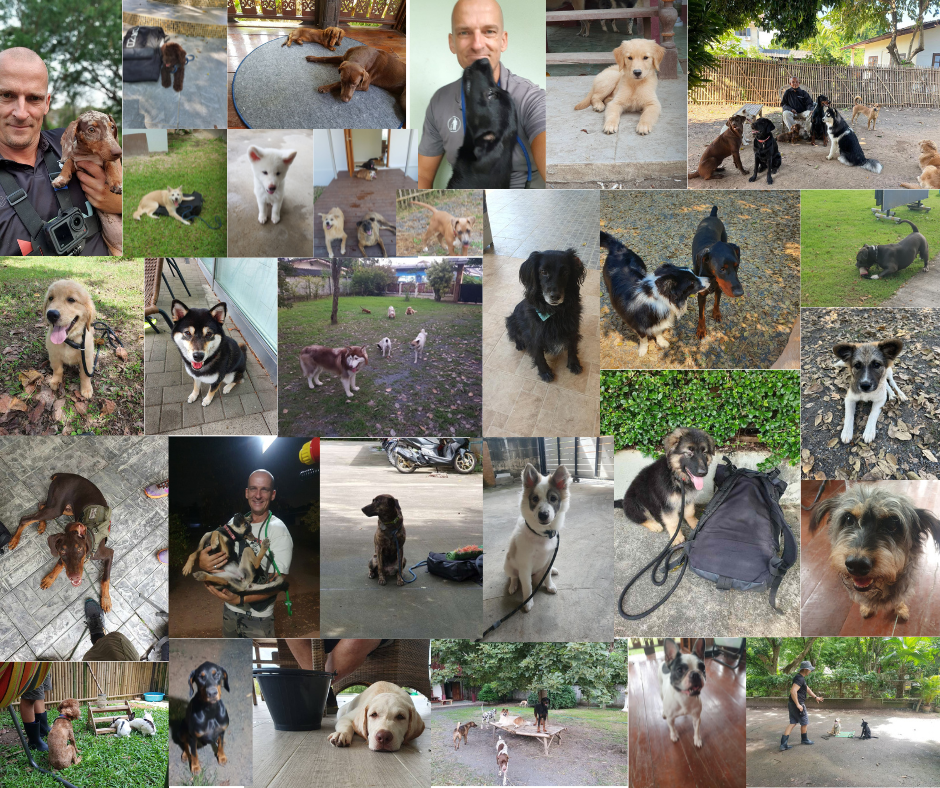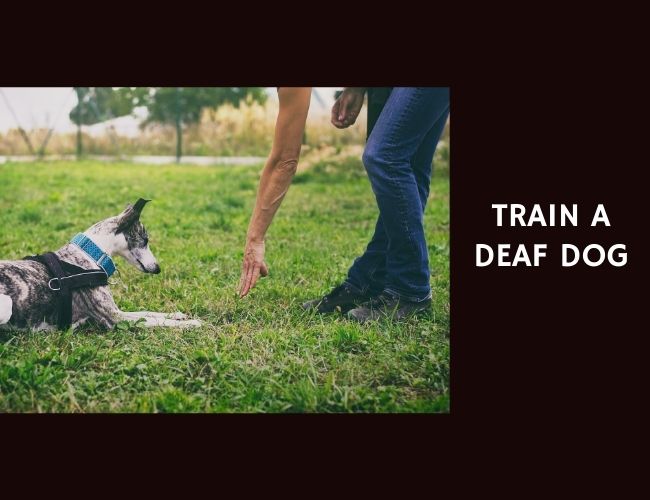Introduction: Understanding Multi-Dog Households
A Growing Trend in Pet Ownership
More families are welcoming more than one dog into their homes. This trend is making multi-dog households increasingly common. As society becomes busier, many pet owners hope having multiple dogs will provide extra companionship and fun exercise for their pets. But it also brings new things to learn and manage as we work towards keeping the peace at home.
Why Harmony Matters in Multi-Dog Homes
Harmony in a multi-dog household means more than just avoiding fights. It’s about creating an environment where all your dogs can thrive together. When dogs get along, the whole family feels more relaxed and daily routines become smoother. A harmonious home lets each dog feel secure, valued, and fulfilled. This is not something that happens by accident—it takes thoughtful planning, observation, and care from you.
What Lies Ahead: Benefits and Challenges
Living with multiple dogs brings both joy and responsibility. There are some wonderful benefits:
- Dogs get regular social interaction and are less likely to be lonely.
- Play between dogs can increase their physical activity, keeping them fit and happy.
- Canine companionship sometimes helps reduce separation anxiety and boredom.
However, there are also meaningful challenges:
- Dogs might compete for resources like food or toys, leading to arguments or stress.
- Sometimes social hierarchies or personality clashes can cause tension.
- Behavioral issues, such as one pet copying another’s anxiety or frustration, can make life more complicated for everyone.
Our journey will explore these opportunities and obstacles, and provide practical advice for making your multi-dog household a successful and supportive environment. This foundation will help you recognize the dynamic nature of multi-dog living, as we go deeper into what it really takes to keep tails wagging peacefully under one roof.
Benefits of Multi-Dog Households
Social Companionship and Reduced Loneliness
Having more than one dog at home brings wonderful social benefits. Dogs are naturally social animals, and having another canine friend means they rarely feel alone. This companionship can greatly reduce feelings of loneliness and boredom, especially when dogs are left home while you are out. With a playmate nearby, dogs can share play, rest, and even comfort each other, leading to happier, more content pets.
Increased Physical Activity and Mental Stimulation
When there are two or more dogs in your home, you will likely notice a boost in daily activity. Dogs often encourage each other to play, whether chasing in the yard, wrestling, or exploring together. These natural activities help keep each dog fit and agile. In addition, having a companion provides constant opportunities for learning and problem-solving through interactive play. This group play leads to better mental stimulation, preventing boredom and the unwanted behaviors that can come with it.
Reduced Separation Anxiety and Improved Enrichment
Another amazing benefit of multi-dog households is the reduction of separation anxiety for some dogs. When dogs have a buddy, staying home while their human is away can feel much less stressful. The comforting presence of another dog can help ease worries and create a sense of security. Plus, dogs continuously learn from and enrich each other’s lives. Through observation and interaction, they practice social skills and enjoy unique forms of enrichment that only another canine can provide.
By understanding these benefits, you are better prepared to create a fulfilling home for all your dogs. Effective planning and awareness go a long way in making sure every dog enjoys these advantages to the fullest.
Challenges in Multi-Dog Homes
Living with more than one dog can bring its own set of challenges. While the rewards are real, it’s important for you to understand these common hurdles so you can keep your dogs happy and your household peaceful.
Resource Guarding and Competition
When multiple dogs share a home, they often have to share resources like food, toys, and even your attention. Sometimes, dogs compete for these resources, which can lead to tension or even aggression. You might notice one dog pushing another away during mealtimes, or refusing to let others near their favorite toy. Dogs can also become jealous if they feel one is receiving more affection than the other. Paying close attention and setting fair rules helps prevent fights and reduces anxiety for everyone involved.
Hierarchical Tensions and Disputes
Dogs naturally form social hierarchies when living in groups. Some dogs want to be in charge, while others are more laid-back. Disputes over who gets to be first—whether it’s eating, getting attention, or simply walking through a door—can cause regular squabbles. Hierarchical tensions can result in growling, snapping, or silent standoffs. Clear and consistent routines, along with guidance from you, help your dogs understand their place, reducing the risk of ongoing conflict.

Temperament Differences and Behavioral Contagion
Not all dog personalities naturally fit together. For example, a high-energy puppy might annoy an older, quieter dog. If dogs have incompatible temperaments or play styles, you might see chasing, barking, or even biting. Also, if one dog is anxious or shows problem behaviors like barking at the door, these behaviors can “spread” to others—a phenomenon called behavioral contagion. This means problems can multiply quickly in a multi-dog home.
Facing these challenges can sometimes feel overwhelming, but with thoughtful planning, patience, and the right support, you can set your dogs up for success.
Successful Dog Introductions
Bringing a new dog into your household is an exciting time, but a smooth introduction is key to future harmony. When dogs meet for the first time, how and where the introduction happens can shape their relationship. Let’s dive into how to make these introductions successful for both you and your dogs.
Using Neutral Territory
Meeting in a neutral area, like a quiet park or open outdoor space, helps both dogs feel relaxed and less territorial. This means neither dog feels the need to protect “their” home. Neutral territory creates a calm environment for those critical first interactions and lowers the risk of aggressive or defensive behavior.
Gradual Introduction Techniques
Rushing things can quickly overwhelm your pets. Gradual steps help dogs adjust at their own pace. Here are a couple of proven techniques:
- Parallel walks: Walk both dogs side by side, a few meters apart, with separate handlers. This allows them to observe and smell each other from a safe distance, building comfort before making direct contact.
- Scent swapping: Swap bedding or toys between the dogs before they meet. Scent swapping lets them get used to each other’s scent, reducing the “stranger danger” feeling during introductions.
Start with short introductions and watch for signs that the dogs are comfortable before allowing longer or closer contact. If things go well, you can gradually reduce the distance and let them greet calmly on loose leashes.
Reading and Responding to Body Language
Dogs use body language to communicate comfort or stress. Watch for tail wags, relaxed ears, and play bows—these are all positive signs! Be on the lookout for tension like stiff bodies, raised hackles, yawning, lip licking, tucked tails, or whale eye. If you see any of these, it’s best to pause and give everyone a break before trying again.
Recognizing and responding to these subtle signals ensures that introductions move at a pace that feels safe for both dogs. With patience and observation, you set the stage for a balanced relationship right from the start.
As you establish trust through introductions, the skills you build will make it easier to guide your dogs toward a peaceful and organized life together.
Establishing Long-Term Harmony
Creating a peaceful home for several dogs means building habits that foster security, trust, and balance for everyone. A thoughtful, informative, and professional approach will help ensure a supportive and harmonious space where each dog can thrive.
Setting a Clear Household Structure
Dogs feel more secure when they know what to expect. As their human, you play a vital role in leading the pack in a calm and consistent way. Set clear expectations for behavior by using easy and simple cues like “sit” or “wait” for meals and doorways. Apply the same rules for each dog, every time. This reliable structure helps reduce disputes about who gets attention, food, or space, as each dog understands how things work at home. Consistency is key for building mutual respect between you and your dogs.
Building Daily Routines
Predictable routines give dogs comfort and reduce stress. Stick to set times for feeding, walking, and play, so each dog knows when to expect their favorite moments. Equal attention for all dogs is important—share treats, affection, and one-on-one time so no dog feels left out. This even-handed approach helps avoid jealousy or rivalry, encouraging each dog to feel like a valued member of the group.
Observe. Structure. Balance.
Harmony Isn’t Luck—It’s Leadership
In multi-dog households, peace doesn’t happen by chance. It’s earned through fair rules, clear routines, and your presence as a steady guide. Dogs thrive when they know what to expect—from you and from each other.
Read the Group Dynamic, Not Just the Dog
Dogs influence one another constantly. One dog’s anxiety, reactivity, or guarding behavior can ripple through the entire household. Early intervention, fair treatment, and individualized support keep group tension from escalating into daily stress.



When It Works, It’s Powerful
A well-managed multi-dog home fosters resilience, companionship, and emotional enrichment. The payoff? A cooperative pack, fewer problem behaviors, and a house filled with peace—not rivalry. You shape that outcome with every cue you give.
Providing Separate Spaces
A harmonious household means respecting each dog’s need for alone time. Make cozy safe zones, like separate beds or crates, where dogs can retreat for rest or relaxation. This gives each dog a space to unwind privately and prevents resource guarding. Use individualized training plans to support each dog’s learning style, age, or energy level. Training dogs one at a time can also reduce feelings of competition, making learning fun and simple for everyone involved.
By laying this foundation, you help your dogs feel safe, valued, and secure in their shared home. The next step is to learn how to spot when harmony breaks down, so you can step in early and keep peace in your pack.
Recognizing Signs of Unresolved Conflict
Living with multiple dogs can be rewarding, but it’s essential to spot early signs of tension to keep your home peaceful. Recognizing when things aren’t going smoothly helps you prevent bigger problems later. In this chapter, we’ll walk you through key behaviors to watch for so you can step in when needed and support each dog fairly.
Identifying Resource Guarding and Over-Arousal
Resource guarding is a common issue in homes with more than one dog. If you notice one dog blocking access to food, toys, or even their favorite sleeping spot—and especially if they growl, snap, or stiffen their body—this is a sign they’re protecting what they see as theirs. This behavior can create a stressful environment for everyone. Over-arousal during play is another warning sign. While roughhousing is normal, things can get too intense. You might see chasing that’s one-sided, stiff movements, loud growling, or nipping. If play escalates and one dog seems overwhelmed or cannot get away, it’s time to step in and give them a break.
Spotting Avoidance and Stress
Sometimes, a dog might not fight back but will avoid the other dog altogether. Look for signs like hiding, refusing to enter certain rooms, or always choosing a spot far from the rest of the pack. You might notice stress signals such as yawning, lip licking, a tucked tail, or flattened ears. These subtle signs often mean a dog feels uncomfortable or insecure. Addressing these behaviors early shows your dogs you’re supportive and attentive to their needs.
Understanding Redirected Aggression
When a dog feels frustrated—maybe from seeing another dog outside the window or during a tense moment with a housemate—they may redirect their aggression toward whoever is closest, even a human. If you notice sudden aggression in situations unrelated to direct conflict, this could be the cause. Recognizing when to step in is important to keep everyone safe. Use calm redirection and avoid putting yourself in the middle of a heated moment.
By staying informed and proactive, you support harmony in your multi-dog household. Careful observation and a professional, supportive approach help every dog feel secure and valued. This foundation prepares you to better understand other individual factors that shape your dogs’ relationships.

Influence of Individual Factors
Breed Matters: Built-In Tendencies
Every dog is unique, but their breed can play a big role in how they get along with others. Some breeds are naturally more social and easygoing, while others might be more assertive or territorial. For example, herding breeds may try to control play, and terriers might have a bolder approach. When living with several dogs, understanding their instinctive traits can help in building smoother relationships among them. This means you can better predict which dogs may pair well and which combinations might create stress or conflict for the group.
Age and Sex: Relationship Building Blocks
Age differences often shape the way dogs interact. Puppies might be bouncy and playful, potentially annoying older dogs that prefer quiet or slower movement. Seniors may become grumpy or less tolerant of rough play from younger companions.
Sex is also a factor. Sometimes, same-sex pairs can have more competition and tension. For example, two male dogs with strong personalities might both try to be the boss. Mixed-sex groupings can often reduce rivalry, though every dog is an individual. Being mindful of these factors makes it easier to set realistic expectations for harmony.
The Lasting Impact of Past Experiences
A dog’s background shapes their feelings around others. Dogs who have lived peacefully with other dogs before may adjust more easily to new pack members. However, if a dog has been bullied or attacked, or has missed social opportunities early in life, they may be more anxious or even fearful. This can lead to aggression, avoidance, or stress.
As a supportive pet owner, being patient and understanding of each dog’s history can help build confidence and trust in your home. It also means you may need to take things slower with introductions and be ready to adjust routines based on their comfort levels.
Taking time to appreciate each dog’s unique makeup leads to a happier group dynamic and strengthens your leadership, setting a positive tone for life together.
The Human’s Role in Multi-Dog Harmony
Fair and Consistent Leadership
As a multi-dog household owner, providing steady and fair leadership is essential for creating a peaceful environment. Our dogs look to us for guidance and clarity. By setting consistent rules for everyone, you help prevent confusion and tension. For example, make sure each dog waits their turn for treats or activities. Avoid showing favoritism. Instead, aim to give all dogs equal attention and resources. If one dog gets more cuddles or exclusive access to toys, it can spark jealousy and competition, disrupting the harmony.
Structured Training Programs
Structured training programs are a powerful tool for shaping positive relationships and addressing any behavioral issues that may arise. Training each dog individually is helpful at first, but group exercises are just as important for teaching teamwork and trust. Commands like “sit,” “wait,” or “leave it” become more valuable in a multi-dog setting. Short, daily training sessions can reduce rivalry and improve focus. It is important that rewards and praise are distributed fairly, further reinforcing a sense of balance in the group.
Proactive Conflict Management
Anticipating and managing potential triggers for conflict is another key responsibility. Watch for signs that may indicate tension, such as stiff body posture or intense stares. Common conflict triggers include:
- High-value resources like food, toys, or sleeping spots.
- Competition for human attention.
- Changes in routine or the household environment.
You can reduce these risks by providing separate feeding spaces, supervising high-energy playtime, and sticking to predictable routines. Regularly observe the body language of your dogs and step in early if play escalates into rough or one-sided behavior. Taking action before minor squabbles grow into bigger conflicts shows proactive and supportive management, a crucial part of keeping peace.
With calm leadership, structured routines, and fair treatment, you set the stage for your dogs to live together happily. This strong foundation supports each dog’s unique personality and encourages mutual respect among all household members.
When to Seek Professional Support
Understanding When Help Is Needed
Even the most caring and knowledgeable owners may find themselves facing trouble in a multi-dog home. You might notice repeated fights, ongoing fear, or clear signs of distress between dogs that do not improve with time or management. If basic training, fair routines, and proactive steps are not making things better, this may be the perfect moment to call in a certified dog behaviorist for extra support.
The Role of Certified Dog Behaviorists
A certified dog behaviorist is a trained professional who understands canine behavior deeply. They assess what is happening in your household and look at every dog’s history, body language, and the little signs you might miss. Their goal is to uncover the root problem—whether it is resource guarding, fear, or tension from incompatible personalities.
Once the main cause is found, the behaviorist will develop a tailored behavior modification plan. This plan often includes changes to your home structure, improved management of routines and triggers, and targeted training. These experts help you learn how to read dog signals, reinforce calm responses, and support all family members through the process.
Types of Interventions and Behavior Modification
Professional interventions can include several helpful techniques:
- Desensitization: Gradually exposing dogs to their triggers in a controlled way, so fear or aggression fades.
- Counter-conditioning: Pairing stressful events with something positive, like treats or play.
- Management strategies: Using gates, leashes, or separate areas to limit conflict opportunities.
- Individualized training plans: Tailored exercises for each dog to address unique needs and behaviors.
Behaviorists may visit your home, guide you through real-life practice, and give ongoing feedback. Empowering you with these tools can build peace and safety in your multi-dog home.
When Separation or Rehoming is Kindest
Sometimes, despite everyone’s best efforts, harmony cannot be restored. In these cases, separation or rehoming may be the most humane decision for everyone involved. This is never easy, but it can prevent lasting harm to dogs and people alike. A professional can help you explore this choice, ensuring a smooth and loving transition if needed.
Taking care of a multi-dog household is a journey. With support, knowledge, and compassion, you can continue building positive routines and a safe, happy space for your dogs.
Conclusion: Creating a Thriving Multi-Dog Household
Pulling It All Together
Owning more than one dog can bring joy, but it also involves significant responsibility. By applying effective strategies, you can set the stage for a peaceful and rewarding multi-dog life. Start by carefully managing introductions with patience and attention to each dog’s needs. Neutral locations, slow approaches, and reading their body language create trust for both you and your dogs.
A solid routine is key. Consistency in feeding, walking, and attention helps everyone feel secure. Remember, all dogs benefit from their own calm spaces, allowing quiet time and comfort. Regular, individual training ensures that every dog knows what to expect and feels included. Acting early on any signs of resource guarding or stress prevents conflicts from growing into larger problems.
The Balance of Benefits and Responsibilities
While dogs in a group can keep each other entertained and active, caregivers must ensure that every dog gets enough resources, love, and attention. Avoiding favoritism and keeping a fair system shows your dogs that the household runs smoothly. Owners are leaders—your calm, consistent guidance creates the positive structure every dog craves.
When difficulties arise, don’t hesitate to seek outside help. Sometimes, even with your best efforts, professional support like a certified dog behaviorist makes a big difference. Prompt intervention helps keep your family and pets safe and happy.
The Rewards of Success
When managed thoughtfully, a multi-dog household becomes more than just a place to live—it becomes a family where every member thrives. Dogs gain friends, constant companionship, and enrichment. As an owner, you get to enjoy more love, laughter, and adventure. Success comes from understanding, patience, and ongoing learning, creating a home where everyone feels safe, valued, and connected.










